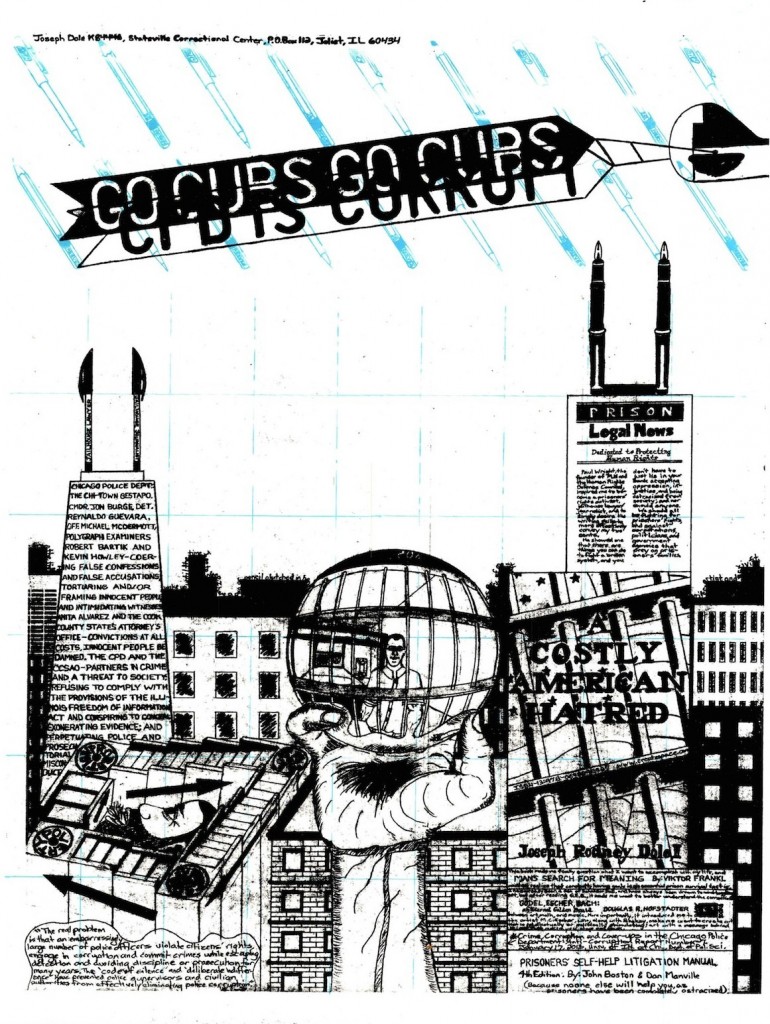HEATH SCHULTZ: I thought it would be a good place to start if you could talk a little about your history of working with incarcerated men? Why do you think this work is politically important?
SARAH ROSS: I’ve been teaching in state prisons for almost a decade now. I first started working with incarcerated women in 2001. Between my stints in art school I worked with survivors of domestic violence through a non-profit in Portland, Oregon. I started going to a county jail to talk with women about safety plans and what they would do when they got out. Four years later when I moved to Illinois and was looking for a job with my newly minted MFA and I saw a posting with a community college to teach art history in a prison; I figured — I can do that! But I was pretty naive.
Jail and prison are totally different as are the populations of men vs. women. At first I thought I could bridge the divides between differences (free, unfree, class, race, gender), or better “education” would be a bridge of those divides. But I quickly realized, in a prison, I could not shake this profound power I had of being able to move where you wanted, when you wanted. Going into a prison as a free person reiterates the level of inequalities between freedom and confinement. They are stark, brutal and tragic. It made me uncomfortable to be in my own skin there, to have that much privilege, to witness this catastrophe of confinement and only have the tool of art history to wield. Within six months I thought I couldn’t do it. I stuck it out and over the next few years I self-educated by reading everything I could and trying to connect with others in this movement. Between that and having really important conversations in class about race, representation, the power of images and the beauty of images, etc. is what kept me coming back.
Two or three semesters later, Brett Bloom (of Temporary Services) and I started a reading and screening group in Urbana, Illinois to collectively understand more of the U.S. carceral history. We met twice a month and the group was called Prison Impact. It was the saddest, most depressing group because not many people participated, but significantly, the subject matter was and is still angering and devastating. We met for about 8-12 months and learned a lot but ended it and about a year later we started holding the group at the prison in Danville, Illinois (about three hours south of Chicago) with incarcerated people.
I didn’t seek out prisons to start teaching… instead, I really dumbly of fell into it. Which is to say a lot about my own social position and how something like a prison figures into my daily way of living. I think prison is a kind of ground zero for the most massive inequalities in our society and therefore it must be engaged and questioned. Precisely because prisons are often isolated it is possible for many of us to not consider conditions of confinement. This is not happenstance, it is completely by design. In this way I think it’s critical to think about how spatial arrangements facilitate a kind of blindness or at the very least a disconnectedness.
Read more at The Journal of Aesthetics & Protest…
